Tinker Crate is a subscription box that inspires kids to learn about science, engineering, and technology, all while having lots of fun. Each month, the box explores a field of study within a STEM (Science, Technology, Engineering, and Math) discipline. Kids practice their problem-solving skills and learn how to engage in both structured and open-ended exploration and investigation. Most boxes walk the tinkerers through the construction of fairly complex mechanical devices.
This month’s theme is LABYRINTH!
Everything arrives together in a single Tinker Crate – the supplies, a fold-out instruction sheet, and the Tinker Zine.
DEAL: Use this link to save 30% on your first box of Tinker Crate! (or Kiwi Crate and the KiwiCo family subscriptions Koala Crate and Doodle Crate).
The kit includes all the materials needed to construct a labyrinth game.
The main project is always a great hands-on activity and a great demonstration of the scientific principles featured in the box, but the Tinker Zine is full of well-written, historically and scientifically accurate background and explanatory materials. This where the lessons really take shape!
The instructions and other project info are printed on a faux blueprint fold-out sheet. One side of the sheet has pointers for using your newly-constructed device, plus an inventory of all the supplies provided in the Crate.
The other side contains highly-detailed illustrated instructions with lots of explanatory blurbs, close-ups of technical areas, and arrows to show where parts are to be placed. They give you enough information at every step that you never have to guess what to do next.
They include checkpoints to verify that assembly is going properly, plus, there is help available if needed!
The Tinker Zine does a great job of explaining the technology and introducing it in a way that is interesting for kids. Here, they start off by introducing graph theory as a mathematical language helpful for solving all manner of spatial problems.
Our kids always read the Tinker Zine completely before tackling the project. The combination of age-appropriate support materials and a cool hands-on project really makes for engaged learners! They do a great job of keeping it light and fun, too!
The Zine’s articles are very in depth, and they use accurate scientific terminology to describe the explored phenomena, yet it’s really well suited to the target age. The pedagogical approach is great for a variety of learners – historical examples are used to illustrate the scientific principles in action, and there is always a balance of text, pictures, diagrams, and hands-on activities.
This historical background section for this particular project was especially interesting. We pondered Minos and its most famous monster.
And we visited the seven bridges of Königsberg.
The historical and cultural segments weave right back into the math and science of the project.
In addition to the cool stuff found in the Tinker Zine, most crates have a secondary project or extension activities that build on the primary project, extending the exploration and focusing in on the science principles demonstrated by the main project.Sometimes you need to provide some simple items from home for the second project or the additional explorations suggested in the Tinker Zine, but this one didn’t require much.
My eight year old daughter found this puzzle especially intriguing.
With our trusty KiwiCrate scissors in hand, she got right to work.
The kit included many self-adhesive foam strips, and the cards were pre-printed with easy, medium, and hard maze designs.
With so many foam strips available, we just had to make our own original design, too.
The main project was relatively simple to put together, thanks to the detailed instructions. The labyrinth surface attaches via strings to the the dowels underneath. Twisting each dowel pulls the string, tilting the board along one of two axis.
Tinker Crate is always a good time. It has a great balance of learning, building, and playing – you never build a static model, and there is always some tinkering, experimentation, or other use of the project once it is built. Tinker Crate’s projects and supporting materials make complex scientific and engineering principles easy for kids to understand and see in action. It is a superb activity for evenings, weekends, and school vacations, as it’s always fun and keeps kids mentally engaged and using their brains.
Have you tried Tinker Crate yet with your kids?
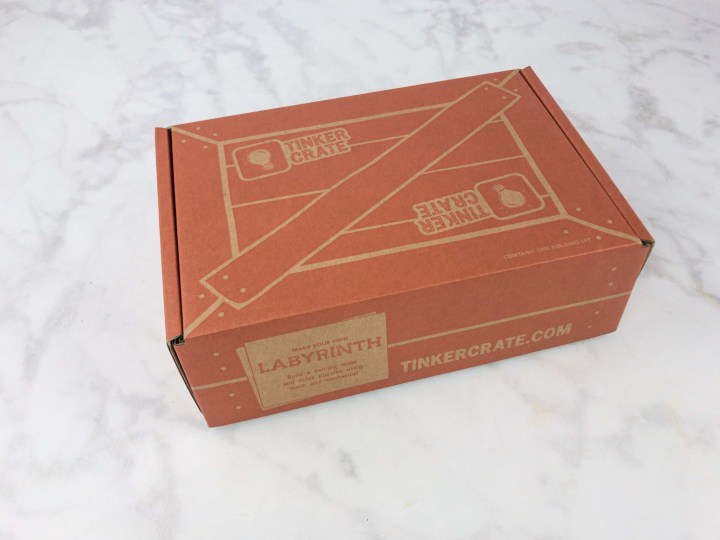
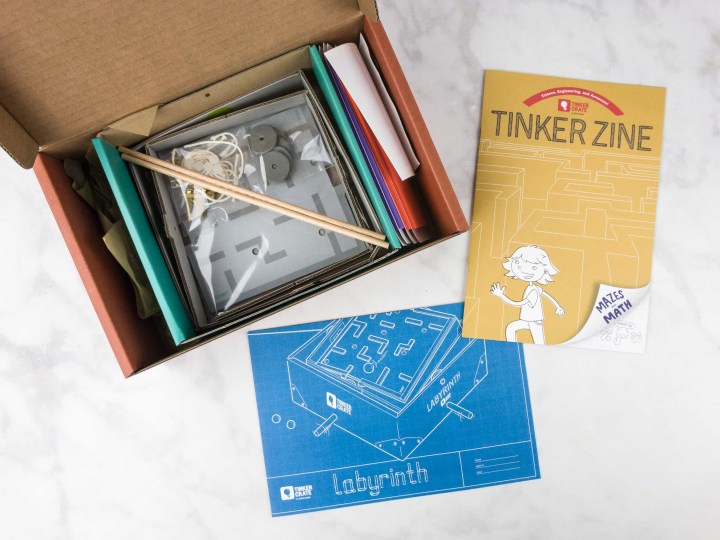
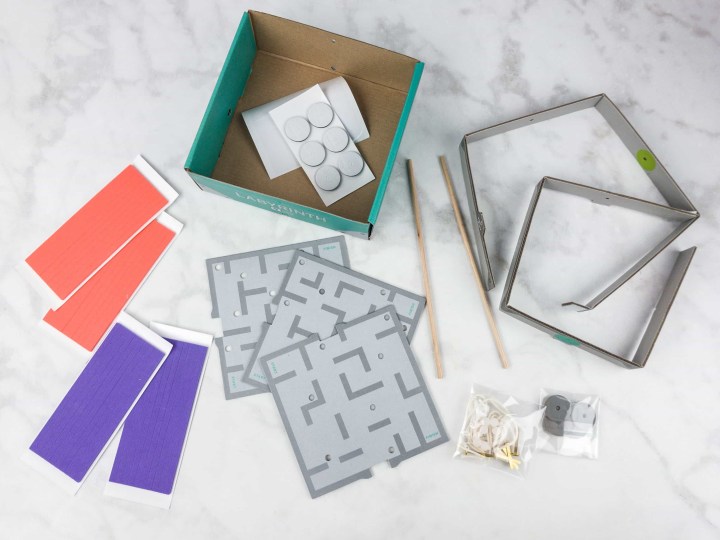

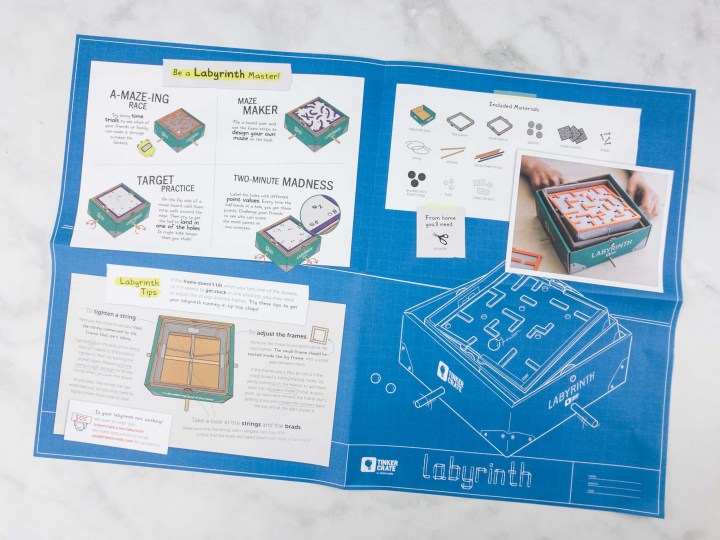
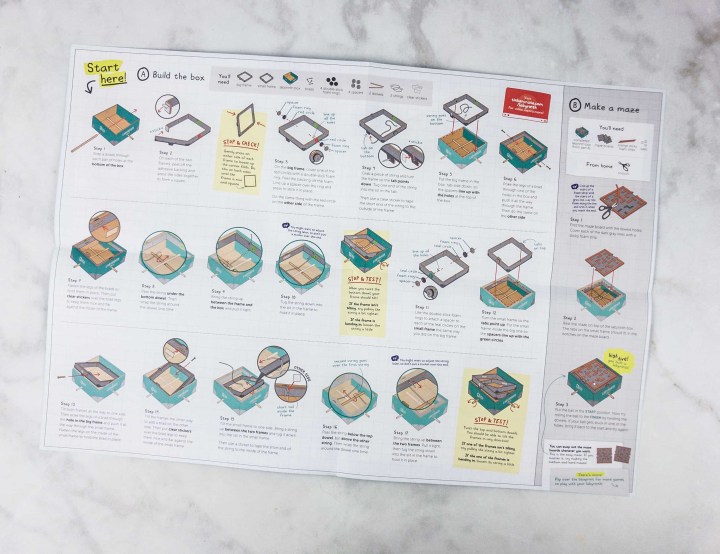

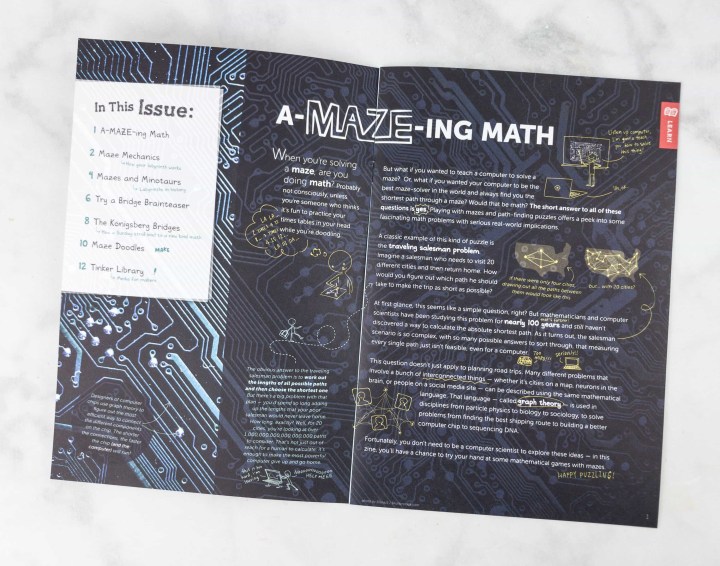
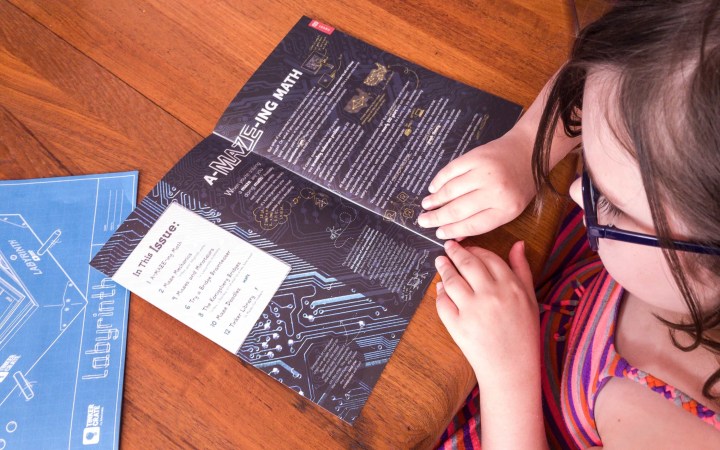
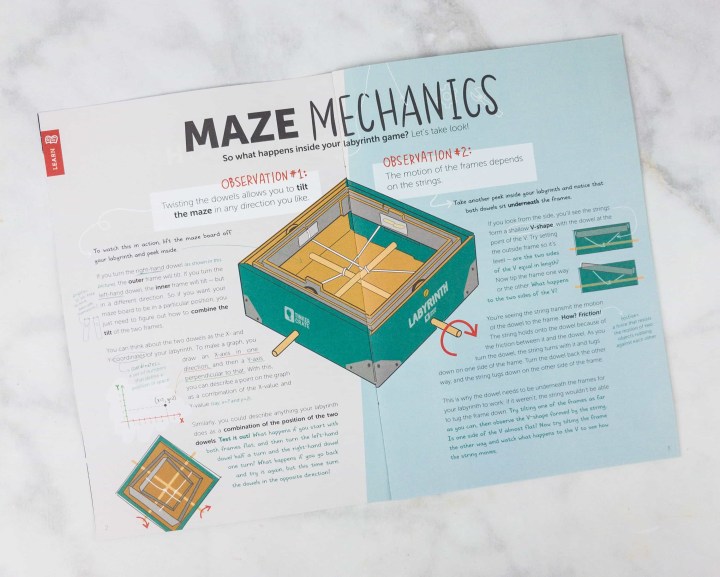
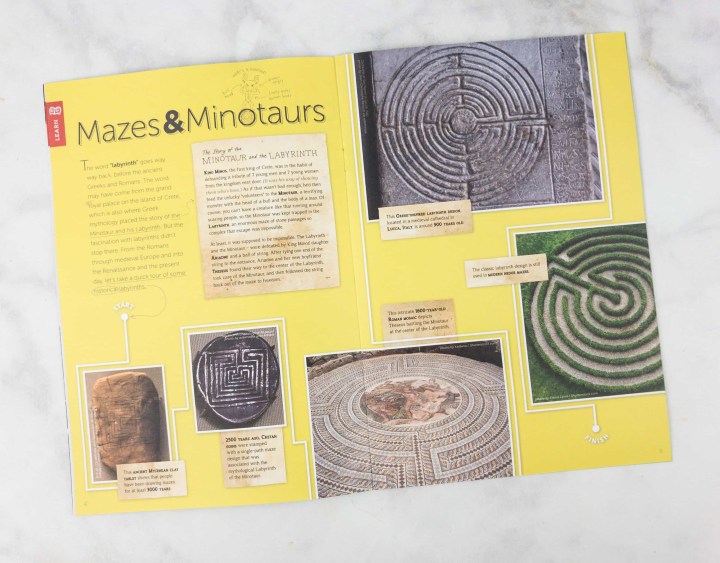
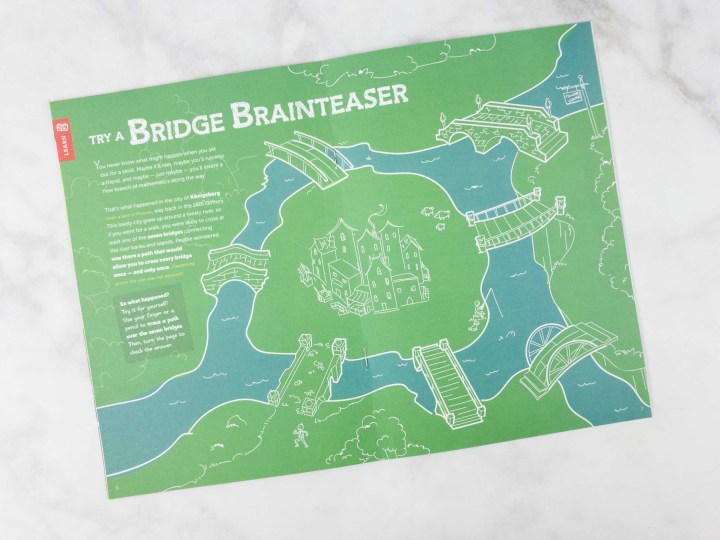

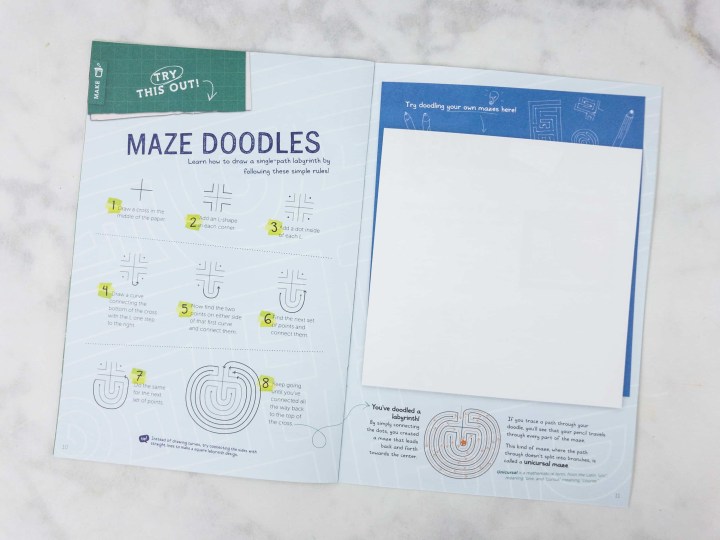
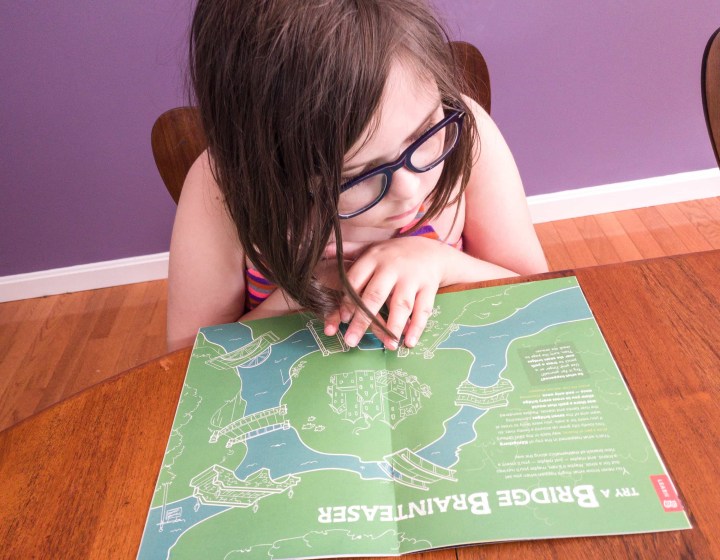
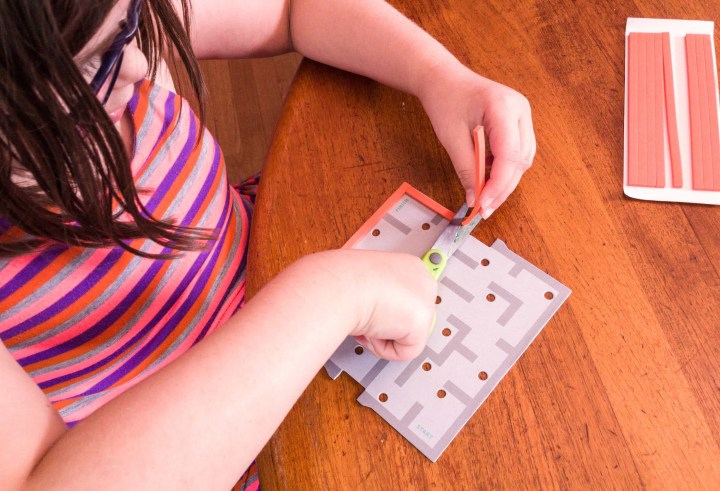
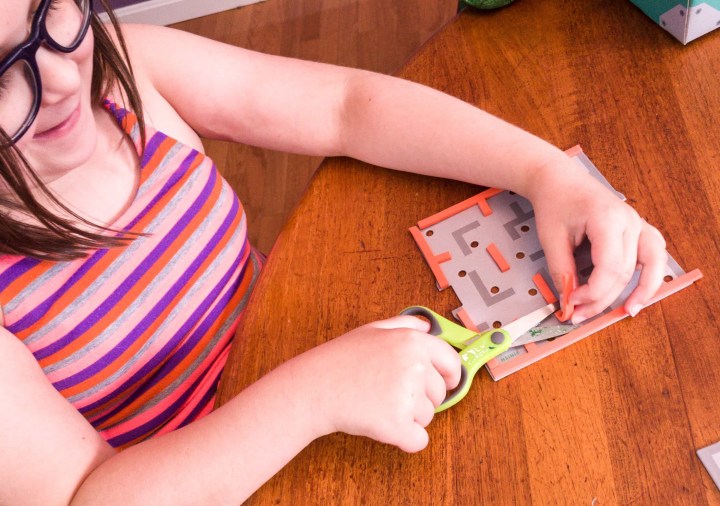
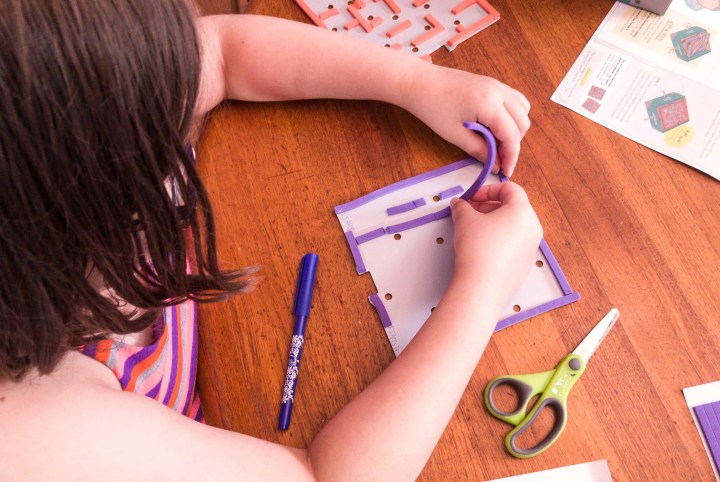
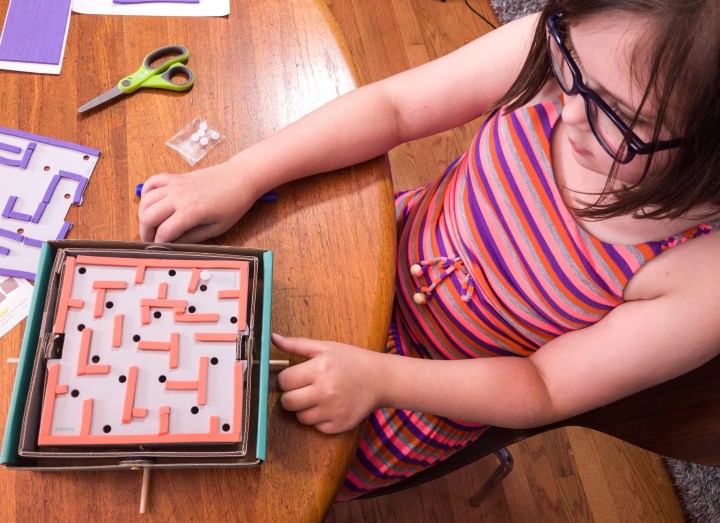
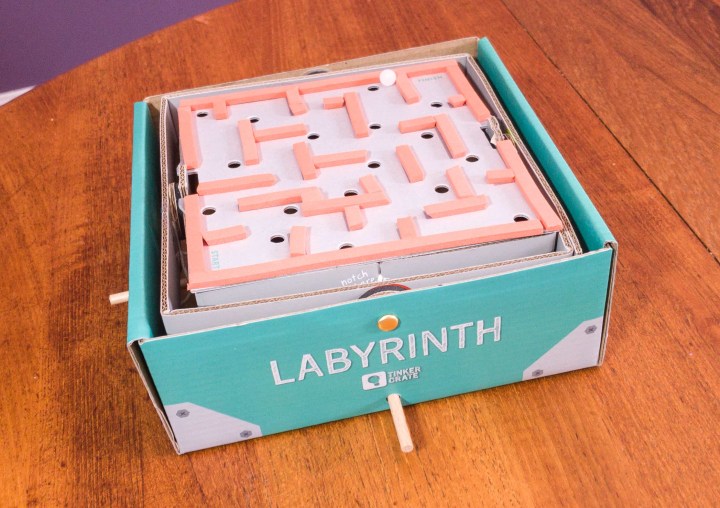




Comments